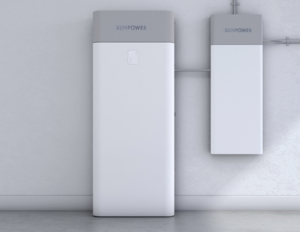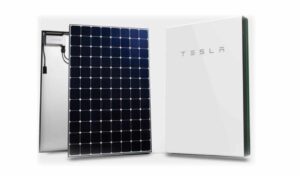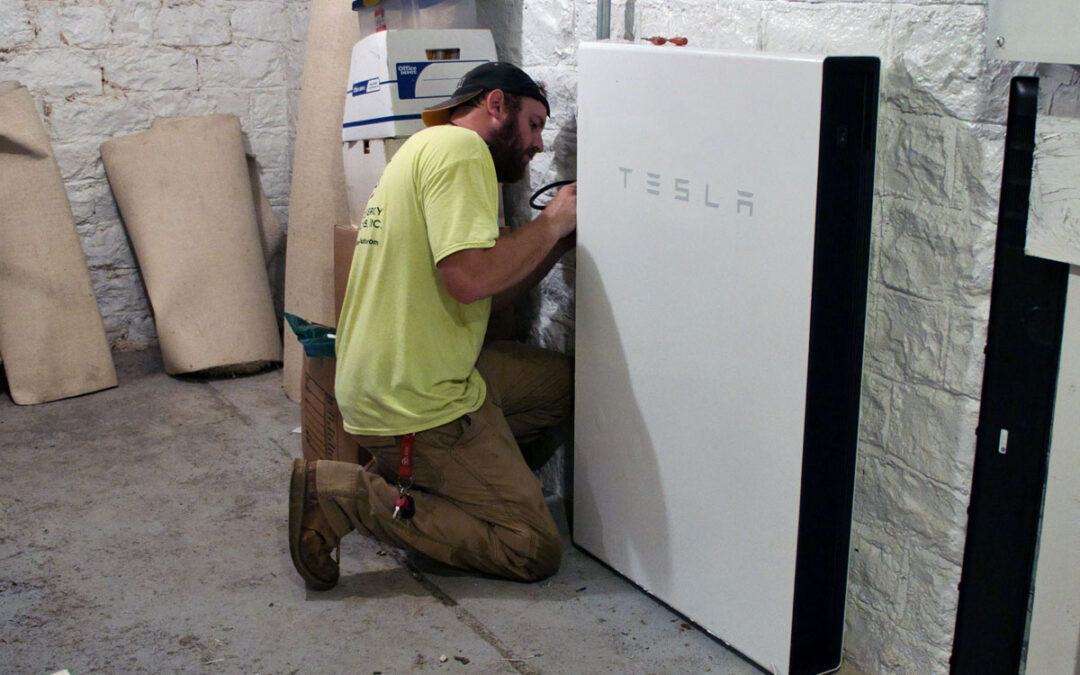Solar power storage solutions like SunPower’s SunVault™ storage system and Tesla’s Powerwall create more value for your solar system by delivering power to your home during outages and minimizing your costs from the electric company during peak hours. Even though only 4% of residential solar installations included a battery backup in 2020, we’re seeing more of our solar customers ask about them when purchasing a solar system.
Solar batteries allow you to store the excess power from your solar panels and use it at a later time. When your solar panels tend to generate less energy, like during cloudy days and after the sun goes down, you can program your backup battery to provide power to your home instead of paying for power from your utility. This means you get to use all of the clean, renewable power that your solar panels produce, no matter what the weather is doing outside or the time of day.
Battery Costs
 There are several factors that go into your backup battery investment. How much power do you need to store? How long do you want your battery to last? How many batteries will you need?
There are several factors that go into your backup battery investment. How much power do you need to store? How long do you want your battery to last? How many batteries will you need?
The first thing to determine is what exactly do you want your battery to power. If you are simply looking for an energy solution for when the grid suffers from a blackout, a smaller battery may be sufficient to keep your lights and refrigerator working during an emergency. If you want a solution that will keep all of your circuits working, including energy hogs like your air conditioner, more batteries may be needed.
The size of your home and the number of people living there will also play a factor in the number of kilowatt-hours you’ll need your backup battery to provide.
Comparing Batteries
As you begin to compare solar batteries, here are a few factors that help differentiate what they have to offer:
- Capacity: This tells you how much power the battery can store and is measured in kilowatt-hours (kWh). According to Consumer Affairs, the average American household uses about 30 kWh each day, and a typical solar battery has a capacity of around 10kWh.
- Depth of Discharge: This indicates the percentage of the battery that has been discharged relative to the overall capacity of the battery. The higher the DoD, the more usage you’ll get from the battery’s capacity.
- Power: This measures a battery’s output capability in kilowatts (kW).
- Round-trip efficiency: This percentage is calculated by comparing the amount of power it takes to fill the battery and the amount of power you can take from it. Much like DoD, the higher the round-trip efficiency percentage, the better value.
All of the battery solutions we offer at Good Energy Solutions have a depth of discharge of 100% and round trip efficiency of over 90%.
Financial Benefits of Solar and Batteries
 Your battery purchase may qualify for the federal solar tax credit, allowing you to get an additional 30% off the cost of your battery installation, so long as the battery is charged with solar energy.
Your battery purchase may qualify for the federal solar tax credit, allowing you to get an additional 30% off the cost of your battery installation, so long as the battery is charged with solar energy.
Also, your backup battery can be programmed to provide power to your home during hours when power companies sell electricity at a higher rate. Peak hours usually take place during weekdays when customers use the most electricity.
Additionally solar batteries make a lot of sense for anyone thinking about investing in an electric car. By using the excess energy generated by your solar panels, your EV could potentially be entirely powered by the sun.
Conclusion
Deciding on which solar panel installation can be difficult enough. Adding backup batteries into the mix adds another layer of complexity. Our solar consultants can walk you through the entire process. They can help you figure out how much power your solar panels need to generate in order to meet your needs and what kind of backup battery solution will fit with your requirements.

